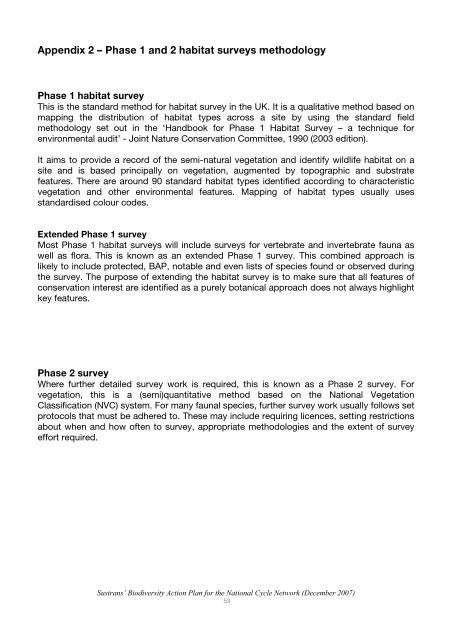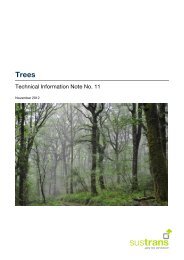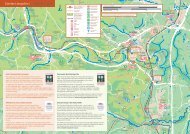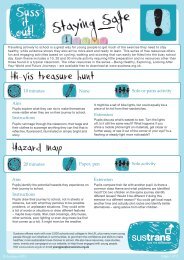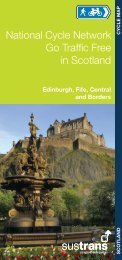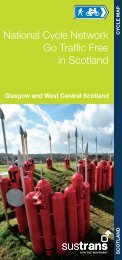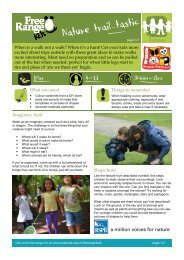Biodiversity Action Plan for the National Cycle Network ... - Sustrans
Biodiversity Action Plan for the National Cycle Network ... - Sustrans
Biodiversity Action Plan for the National Cycle Network ... - Sustrans
You also want an ePaper? Increase the reach of your titles
YUMPU automatically turns print PDFs into web optimized ePapers that Google loves.
Appendix 2 – Phase 1 and 2 habitat surveys methodology<br />
Phase 1 habitat survey<br />
This is <strong>the</strong> standard method <strong>for</strong> habitat survey in <strong>the</strong> UK. It is a qualitative method based on<br />
mapping <strong>the</strong> distribution of habitat types across a site by using <strong>the</strong> standard field<br />
methodology set out in <strong>the</strong> ‘Handbook <strong>for</strong> Phase 1 Habitat Survey – a technique <strong>for</strong><br />
environmental audit’ - Joint Nature Conservation Committee, 1990 (2003 edition).<br />
It aims to provide a record of <strong>the</strong> semi-natural vegetation and identify wildlife habitat on a<br />
site and is based principally on vegetation, augmented by topographic and substrate<br />
features. There are around 90 standard habitat types identified according to characteristic<br />
vegetation and o<strong>the</strong>r environmental features. Mapping of habitat types usually uses<br />
standardised colour codes.<br />
Extended Phase 1 survey<br />
Most Phase 1 habitat surveys will include surveys <strong>for</strong> vertebrate and invertebrate fauna as<br />
well as flora. This is known as an extended Phase 1 survey. This combined approach is<br />
likely to include protected, BAP, notable and even lists of species found or observed during<br />
<strong>the</strong> survey. The purpose of extending <strong>the</strong> habitat survey is to make sure that all features of<br />
conservation interest are identified as a purely botanical approach does not always highlight<br />
key features.<br />
Phase 2 survey<br />
Where fur<strong>the</strong>r detailed survey work is required, this is known as a Phase 2 survey. For<br />
vegetation, this is a (semi)quantitative method based on <strong>the</strong> <strong>National</strong> Vegetation<br />
Classification (NVC) system. For many faunal species, fur<strong>the</strong>r survey work usually follows set<br />
protocols that must be adhered to. These may include requiring licences, setting restrictions<br />
about when and how often to survey, appropriate methodologies and <strong>the</strong> extent of survey<br />
ef<strong>for</strong>t required.<br />
<strong>Sustrans</strong>’ <strong>Biodiversity</strong> <strong>Action</strong> <strong>Plan</strong> <strong>for</strong> <strong>the</strong> <strong>National</strong> <strong>Cycle</strong> <strong>Network</strong> (December 2007)<br />
53


